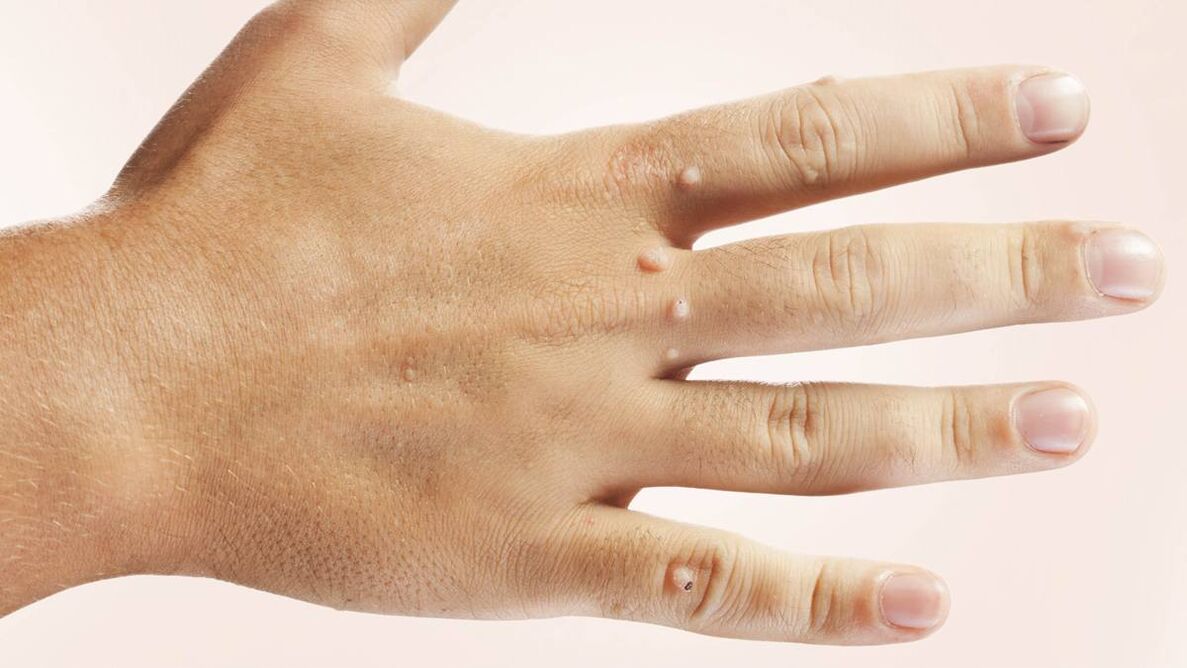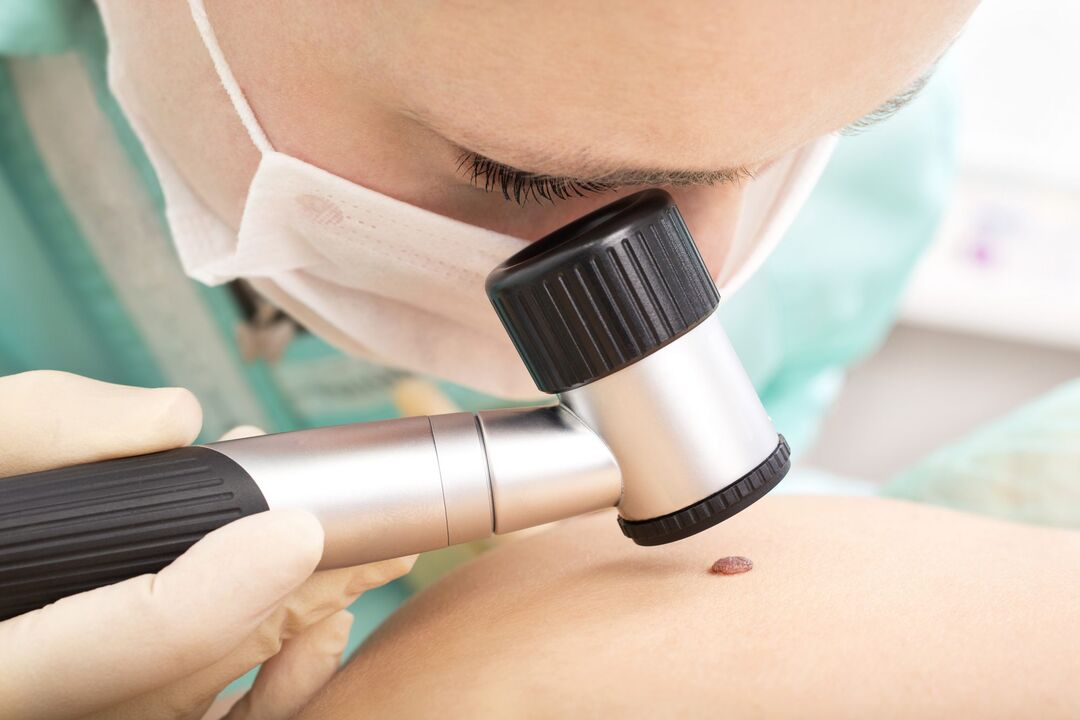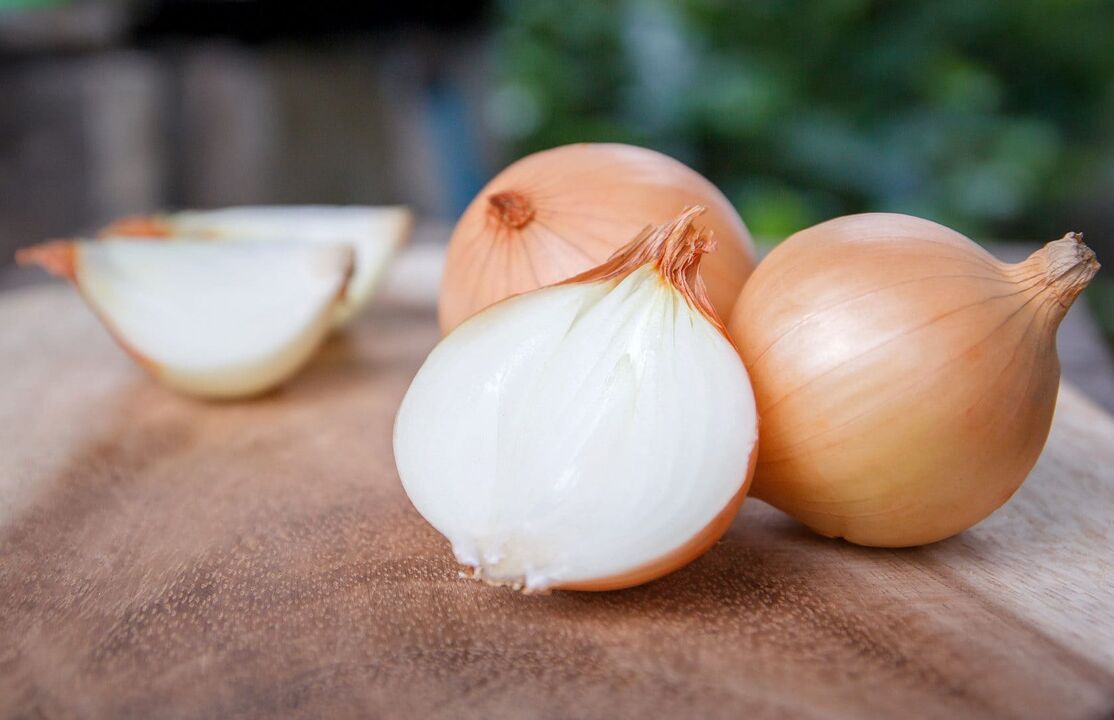Warts can appear on everyone. In many cases, they disappear on their own, but sometimes they need to be removed. Of course, the removal of warts is best done in a medical institution. Self-disposal of such tumors may not produce results, and vice versa, causing them to be injured. You will learn where to remove warts in the next article.

Who may have warts
Everyone can get warts, but the ones most likely to get papillomavirus are:
- Children and adolescents;
- Adults and children who have the habit of biting their nails or biting off barbs;
- People with weakened immune systems.
In children, warts usually disappear without treatment. If the warts bother the child (for example, pain) or multiply rapidly, consult a dermatologist.
Signs and symptoms
According to the appearance and location of the body, several types of warts can be distinguished. The following are the common signs (what a person sees) and symptoms (what a person feels) for certain types of warts.
Vulgar (common) warts
If your child has warts on his face, be sure to check his hands-most likely you will also see warts there. The virus usually spreads to the facial skin when touched or when a child bites his nails.
Common warts:
- It is more common on the fingers, around the nails and on the back of the palms;
- It is more common in areas where the skin is often damaged, such as where there are burrs, or when you have the habit of biting your nails;
- In most cases, they look like a small nodule (compacted), with an uneven surface;
- There may be black spots on the surface (actually, these are blood vessels formed by small thrombi), sometimes incorrectly referred to as the "root" of the wart.
Plantar warts
They appear on the soles of the feet and are sometimes difficult to treat.
Plantar warts:
- More often on the soles of the feet;
- Can grow, combine and form so-called clusters (mosaic warts);
- It is more common to be flattened or ingrowth (due to the pressure generated when walking);
- Pain, especially under pressure;
- Often cause the feeling of pebbles in the shoes;
- There may be black spots on the surface.
Flat warts
- It can appear anywhere, but it is usually more common on children’s face, male-chin, female-leg;
- Smaller and smoother than other types of warts
- Usually, multiple appear in groups, usually in large numbers-from 20 to 100 at a time.
Filiform warts (acrochords)
- Growths that look like long lines or slender fingers;
- More common on the face: around the mouth, eyes and nose;
- Tend to grow rapidly.
Do I need to remove warts? why
For each type of papillomavirus in medicine, a numbering system is used. As we all know, the HPV types numbered 57, 26-29, 14-17, 12, 10, 7 1-5-cause the appearance of various warts, from 1 to 4-cause plantar warts, 49, 28, 3 and 10. -Flat, HPV 27-Normal.
Carcinogenic HPV types require special attention, such as 52, 39, 33, 31, 30, 70, 40, 51, 55, 61-64. They can cause precancerous lesions and are considered the most dangerous. When located on the penis, vagina, cervix-HPV 16, 11, 13, 31, 33, 35-genital warts and papillomas form.
The following papillomaviruses can be localized to the external genitalia and mucous membranes and are considered particularly dangerous-they are types 70, 66, 56, 33, 31, 18, and 16. Many people with warts will ask the question, can warts be removed? Isn't it dangerous?
In any case, a person should consult a dermatologist to determine the nature of the tumor and its type. In addition to eliminating aesthetic discomfort and increasing the risk of harm to growth, tumors must also be treated or removed, because the presence of virus-infected lesions will promote its spread to other areas of the skin, and there is also the following risk: tumors degenerate into malignancyTumor. Be sure to consult a dermatologist to find out the type of wart, papilloma or condyloma acuminata and determine the best way to get rid of it.
Please do not postpone your visit if the following situations occur:
- The tumor is bleeding or has been torn;
- If the wart becomes painful, itchy, or burning
- Change the color, the color becomes uneven, change the shape and size
- The number of warts is increasing, and there are multiple offspring growth
- If the wart is located in a prominent place, it will often be traumatized and cause psychological discomfort.
It may not be safe to remove warts at home. All doctors agree that removing warts at home is dangerous and is not recommended for the following reasons:
- Handling the deposits by oneself usually results in scars, scars or burns on the nearest skin tissue;
- Using various domestic methods, it is possible to introduce infection into the wound and develop an inflammatory process or spread the virus to other areas of the skin;
Of course, the probability of real warts turning into malignant tumors is not high, but there is still such a risk. After any tumor is removed by itself, there may be undesirable consequences if the removed material is not diagnosed and hysteroscopy is performed.
How to diagnose warts?
In the case of warts, in order to confirm the diagnosis, the dermatologist usually only needs to observe them. In some rare cases, a biopsy may be required to confirm the diagnosis. To do this, the doctor will remove the wart and send the sample to the laboratory for examination under a microscope. Don't worry-this is a fast and safe procedure.

How to treat warts
In children, warts usually disappear on their own without any treatment.
In adults, warts are also completely harmless in most cases, but unlike children, they sometimes do not go away on their own.
If the following conditions occur, you need consultation from a dermatologist:
- Warts change their shape, color, and size;
- Warts hurt you;
- The number of warts increases.
There are many different ways to remove warts. The choice of one method or another depends on the patient’s age, health, and type of wart.
Wart body acquisition
Usually, papillomas (warts) are confused with moles. Warts can be removed in the same way as moles. Each has its own advantages and disadvantages. For example, traditional surgery will leave marks on the skin anyway.
Surgical removal of warts is generally not recommended, as warts often grow back.
Through freezing destruction and laser removal, it is not always possible to accurately control the depth of influence on the tissue. Electrocoagulation allows you to control the depth of exposure, but there is still a risk of scarring. Therefore, a combination of several methods is sometimes used. Other treatments for warts include topical salicylic acid, tape, and chemotherapy.
Basic methods to remove warts
Practice shows that many patients try to get rid of them using folk methods. However, the folk method itself is not very effective, and in some cases it may even become dangerous, which is always worth understanding. The correct process is only possible when the expert is fighting not only the skin manifestation of the virus, but also its foundation. There are several ways to eliminate these tumors:
- Radio wave. . . a relatively new but well-proven method. With the help of special equipment, radio waves of a certain frequency are exposed to the skin structure. The advantage of this method is that it allows you to remove the wart itself and its roots.
- Electrocoagulation.The term uses special electrodes to hide the burning of the tumor. Due to local anesthesia, all procedures are performed under local anesthesia, and you can always be sure that you will not experience any negative feelings.
- A type of liquid nitrogen.Another well-known method. Nitrogen freezes the wart and its roots, so a truly rapid and high-quality removal is carried out.
To remove warts, a dermatologist can use:
- Cryotherapy(Liquid nitrogen) is the most commonly used method for removing common warts in adults and older children, and it is not too painful. However, this procedure usually needs to be repeated. Using this method in dark-skinned people can cause dark spots to form on the skin.
- Electrosurgery and curettage. . . Electrosurgery (electric moxibustion) is an effective way to remove vulgar, filamentous and plantar warts. Curettage is a method of scraping warts with a sharp knife or a special instrument (curette). After scraping, electrocoagulation is performed and a bandage is placed on the wound.
Usually these two processes are used together. A dermatologist can remove warts by curettage before or after cauterization.
Doctors can also surgically remove warts.
In cases where the above methods do not produce positive results, a dermatologist can use one of the following methods:
- Laser treatment under local anesthesia;
- Cautery chemicals are often used to treat flat warts. This peeling is done at home every day, for which they use salicylic acid and glycolic acid preparations;
- Immunotherapy to treat warts is a way to activate the body's own defenses. Prescribed when other types of treatments have not produced positive results.
One type of immunotherapy is the application of special substances to warts. Allergic reactions can occur around the treated warts, which can help the body deal with them. Another type of immunotherapy is to inject interferon into the wart. Injection can improve immunity and make the body fight the virus.
Unfortunately, there is no way for you to remove the warts once and for all with a 100% guarantee. They can reappear in the old place, or they can reappear in the new place. Sometimes it seems that new warts appear faster than old warts disappear. This can happen if the virus infects cells adjacent to the wart before the wart is removed. This is why new warts usually appear near the old warts.
Self-treatment and removal
There are many ways to use folk remedies to remove warts, but this does not mean that you should forget traditional medicine and keep treating yourself.
Any recipe for wart removal, every video about wart removal, comments to people and beauticians-this is just an introductory material that shows that warts in children and adults can be removed without consequences.
But you should never do experiments and draw conclusions hastily-every tumor on the human body should be shown to the doctor, who uses laboratory tests to study it before it can be cured or removed. But despite this, we decided to introduce you to some methods for removing warts at home. We hope that these materials, as we have suggested, are for your reference only.
Since the cost of wart removal in some clinics and beauty salons makes people a little scared, they try to treat the tumor by themselves, and it happened.
Bulb handling
A medium-sized raw onion is soaked in vinegar for about two hours, cut open and tied to the wart overnight. The procedure continues until the wart disappears.

Wood ash treatment
Wood ash, preferably fresh, should be diluted with clean water until a uniform slurry is formed and should be applied to the warts every day until they disappear.
Celandine to remove warts
Apply fresh celandine juice to the wart in the morning and evening. Because it contains alkaloids, warts can be treated quickly. They dried up and left. The procedure should be repeated until the wart disappears completely. Be careful when using celandine juice, it should not get on healthy skin because it is very corrosive.
Removal of warts and papillomas by cauterization
This method is painful, but in the eyes of many people, it is very effective. It is necessary to take a dry stick from the branch of any tree and place it on an open flame. When it starts to smolder, you need to burn the tumor with heat. This should be done several times and the warts will disappear after 5-7 days.
As you can see, in addition to buying wart removal drugs at the pharmacy, you can still grow them in your summer house or find them in your home. Whether to experiment and think is up to you, but we have made a choice and have recommended it to you many times.
After papilloma removal
Remember, simply removing the wart will not eliminate the virus in the body. After a long time or not, the papilloma may reappear. This is due to the presence of virus particles. If you want to get rid of the virus for a long time, you must take precautions. How to do it?
Vitamin therapy. Conduct a two to three month course that focuses on the high concentration of zinc in the vitamin and mineral complex you take. Zinc inhibits the proliferation of virus particles. Therefore, the human papillomavirus died once and for all.
- Good personal hygiene. Good skin care.
- Avoid stress and overwork, and normalize daily life. You need at least eight hours of sleep a day.
- Eat well.
- In the first three months, preferably six months, try not to get too cold after removing the warts to avoid catching a cold.
- Check for intestinal flora imbalance. If possible, please take a course of probiotic treatment.
- See an infectious disease specialist or immunologist. Your doctor will prescribe antiviral drugs to stimulate your immune system.
When considering the removal of warts, please consult a qualified specialist first.
Suspected malignant papillomas are best removed at the appointment with the oncologist.
This structure is best for controlled histological examination.
prevention
To prevent the appearance of warts, dermatologists recommend the following:
- Don't hurt the warts;
- Wear sandals or other special shoes when going to the swimming pool, public showers and changing rooms;
- Don't touch other people's warts;
- Wipe dry feet with warts. Moisture can easily spread warts.













































































